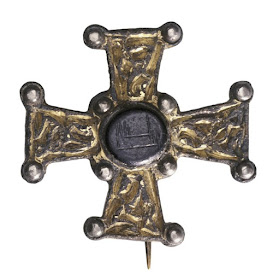Before
we move further into this study of the Global Middle Ages, a brief word
needs to be made on the topic of Translation Theory. Suffice it to say,
we tend to avoid the term influence here on Beyond Borders, though
appropriation may creep in there now and then. Firstly, Translation
Theory is born out of the medieval application of Postcolonial Theory.
Nadia Altschul describes the postcolonial approach as one that ‘fosters
an examination of all sides of a colonial encounter and examines the
different pasts that are active in different presents, but it also works
towards a resolution of the structural and psychic inequalities
inherited from colonial contact’.1 While Postcolonial Theory’s
applicability to medieval studies has been debated, Jeffery Cohen
describes the benefits of the theory as a means to ‘rethink keywords of
postcolonial theory,’ ‘rethink history as effective history,’
‘destabilize hegemonic identities,’ ‘displace the domination of
Christianity,’ and to ‘decenter Europe’’.2 Translation Theory thus
develops out of this theoretical model in an effort to describe the
movement of artistic models across cultures without forcing a linguistic
emphasis on one centre of production over another, thus the use of
translation as opposed to influence. Michael Baxandall saw this shift in
language as centred on the issue of agency, with one party influencing
another, perpetuating an ideology of a one way exchange, which
translation seeks to break by acknowledging the hybrid form.3
Touching
upon this hybridity, a postcolonial term, Catherine Karkov describes
the hybridity of Insular art as seen through the Lindisfarne Gospels.
Karkov broadly defines hybridity as referring to ‘ the fact that no
culture is pure, cultures always show the evidence of contact with other
cultures that leads to changes (hybridity) with both cultures’.4 Thus,
the Lindisfarne Gospels are not simply the product of one culture, but
rather the product of continue exchange, translation, and artistic
editing of this information to suit varying and changing need.
Additionally, Postcolonial Theory seeks to understand the peoples or
objects studied as fluid, changing, active, and full of cultural agency
which reaches even into the present, as seen specifically in Siân
Jones’s work with the Hilton of Cadboll stone and regional identity.5
The development of the theory of visual translation, of artistic
translation of forms and cultural elements into a local visual
‘language’ is still on going, as seen explicitly in the recent
publication of the conference Under the Influence
in 2007 and in other conferences such as the University of Edinburgh’s
‘From Influence to Translation: Art in the Global Middle Ages’ in May of
2012 as well as in The Courtauld Institute of Art’s ‘Beyond the Western
Mediterranean’ in September 2012. Like any methodological model,
Translation Theory is still being critiqued, yet it does offer a means
of framing the description of the movement of artistic models and forms
from one culture into another through the metaphor of translation,
which itself highlights the inherent change which takes place as
language is itself translated from one language into another. Through
the process of shifting the words into another language, emphasis
shifts, meanings alter, and a new hybrid form is created.
1. Altschul, Nadia. 2009. 'The Future of Postcolonial Approaches to Medieval Iberian Studies', Journal of Medieval Iberian Studies, 1.1: 13.
2. Cohen, Jeffrey. 2000. The Postcolonial Middle Ages (New York, St. Martin's): 6-7.
3. Brown, Michelle. 2007. ‘An Outbreak of ‘Influenza?’: Aspects of Influence, Medieval and Modern’, Under the Influence: The Concept of Influence and the Study of Illuminated Manuscripts (Turnhout, Brepols): 3.
4. Karkov, Catherine. 2011. The Art of Anglo-Saxon England (Rochester, The Boydell Press): 3.
5.Jones, Siân . 2005. ‘’That Stone was Born Here and That’s Where it Belongs’: Hilton of Cadboll and the Negotiations of Identity, Ownership and Belonging’, Able minds and Practiced Hands (Leeds, Maney Publishing): 37-53.Image: Hilton of Cadboll Stone © National Museum of Scotland
-Samuel


